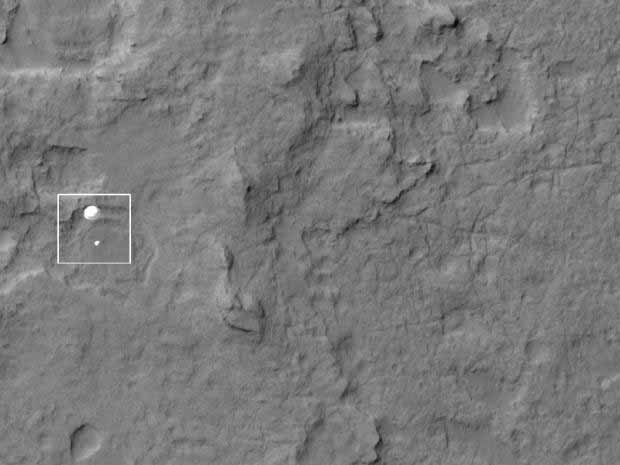NASA thanks Aussies for Mars success


The Australian team that helped guide NASA's rover, Curiosity, safely to the surface of Mars is over the moon about its role in the US$2.6 billion mission.

(Credit: NASA/JPL-Caltech/University of Arizona)
The Canberra Deep Space Communications Complex at Tidbinbilla, about 40km from the national capital, played a key communications role in Curiosity's rapid descent to the landing zone in the Gale Crater.
The scientific exploration vehicle touched down about 3.33pm (AEST) on Monday, to cheers, tears and applause at the NASA command centre in California and at the Canberra complex, which is part of NASA's Deep Space Network.
Soon after, Tidbinbilla transmitted the first photograph — a black and white image showing one of the wheels of Curiosity touching the Martian soil.
"Today, right now, the wheels of Curiosity have begun to blaze the trail for human footprints on Mars," NASA administrator Charlie Balden told journalists via video-link from California.
"This is an amazing achievement, made possible by a team of scientists and engineers from around the world."
Balden thanked the 107 scientists at Tidbinbilla, the only Deep Space Network station (of the three, globally) that was facing Mars for the descent.
"The Deep Space Network was what made it possible for us to be getting all the data and everything," he said.
The rover and the spacecraft carrying it took about seven minutes, from when it entered Mars' atmosphere, to hit the surface.
Because of the immense distance involved, radio signals confirming the landing took 14 minutes to reach the Earth.
Scientists were desperate to confirm its safe arrival, after completing a series of complex engineering feats to bring the rover down.
"By the time we receive the first signals here, to say that we've entered the atmosphere of Mars, the spacecraft has been on the surface, alive or dead, for at least seven minutes," Tidbinbilla complex spokesman Glen Nagle told AAP.
"That's terrifying."
Almost 200 people crammed into the Tidbinbilla station's visitor centre to watch the live stream from NASA command.
They included former CSIRO scientists Hamish Lindsay and Terry Lloyd, who were involved in tracking the Apollo 11 moon landing, and US ambassador Jeffrey Bleich.
Australian software company Atlassian also had a hand in the launch. NASA's Jet Propulsion Laboratory (JPL) used Atlassian products to build the software used for flight mission planning, as well as modelling data sent back from satellites and the Mars rover.
The software was developed across various locations in the US; to help the collaboration, they used Atlassian products, including JIRA, GreenHopper, Confluence, Bamboo, FishEye and Clover.
Data collected by Curiosity will be sent back to earth once a day, where a cloud computing hive will crunch the data. Then, a task list for the next day will be sent to the rover, programmed in a build environment that is controlled by Bamboo.
The 950kg rover, which left Earth on 26 November, will now begin a 23-month mission to examine the crater area around its landing spot and climb a 5km mountain.
Curiosity is searching for carbon compounds that could indicate life on Mars.
"We're not looking for life, but the possibility of it," Nagle said.
"If life is ever detected somewhere as close as Mars, it could mean life is everywhere throughout the universe."